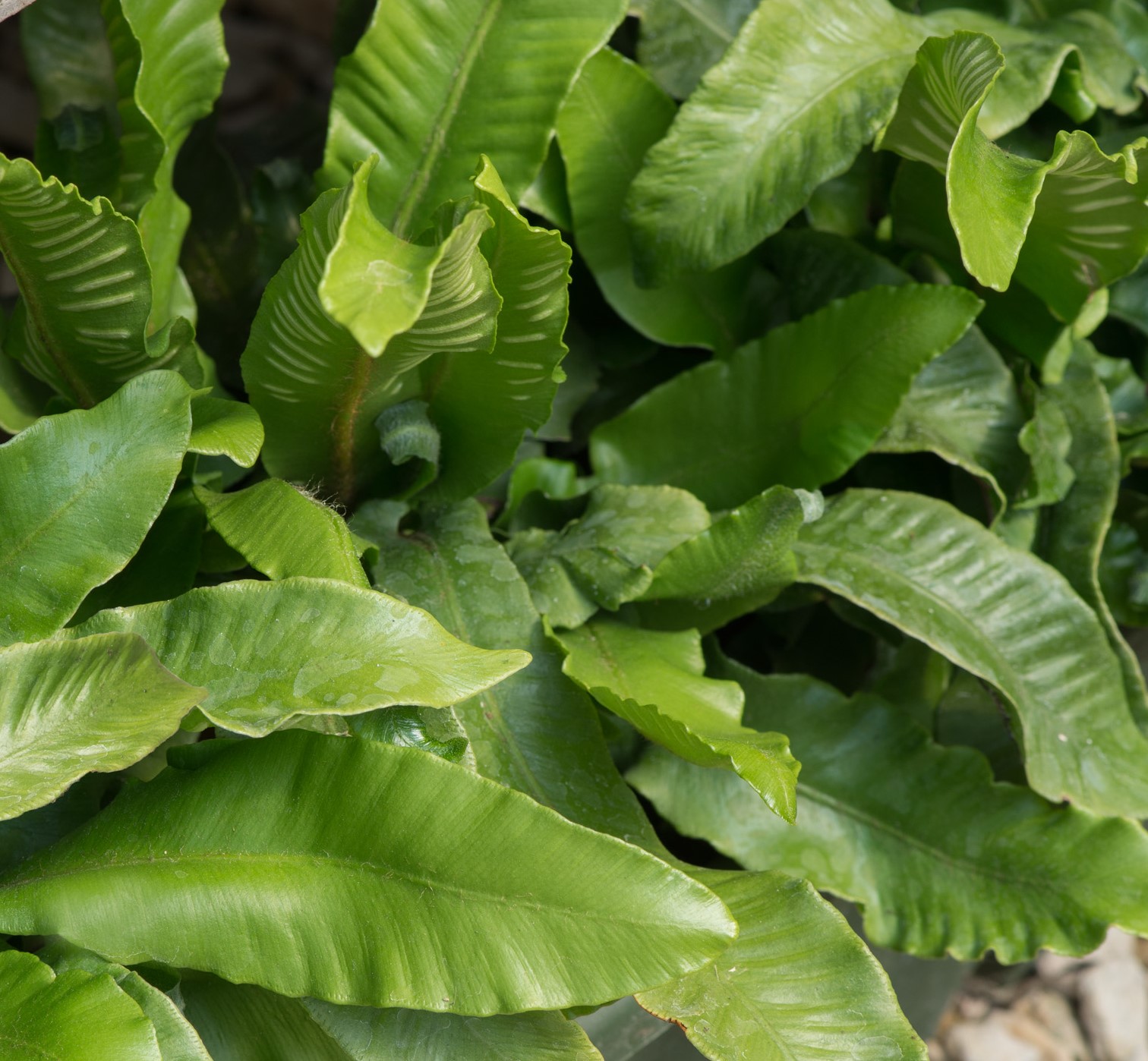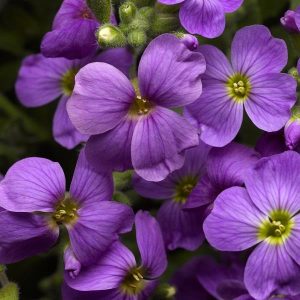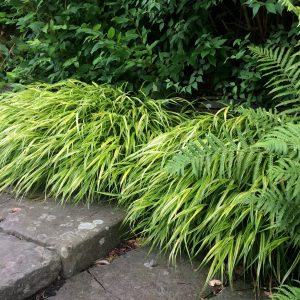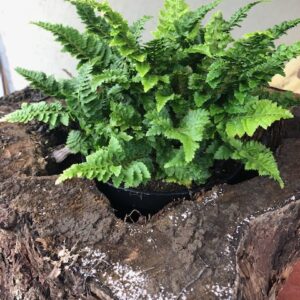Asplenium scolopendrium
Hart’s Tongue Fern.
Evergreen shuttlecock-like crowns of bright, glossy green, often waved, fronds, heart-shaped at the base.
Max Height 60cm. Max Spread 60cm. Partial shade. Hardy.
MORE
Asplenium scolopendrium, commonly known as the Hart’s tongue fern, is a species of fern that belongs to the family Aspleniaceae. It is a perennial plant that is native to Europe, North Africa, and Western Asia. The plant has a unique appearance, with fronds that resemble the tongue of a deer or hart, hence its common name. In this article, we will explore the various characteristics of Asplenium scolopendrium, its habitat, and its uses.
Asplenium scolopendrium has glossy green fronds that are around 30-60cm long and 5-10cm wide. The fronds are undivided and have a distinctively long and narrow shape, with a slightly undulating edge. The leaf stalks are dark brown and are also quite long. The fronds emerge from a central rosette that is typically about 20cm in diameter.
The plant produces spores on the underside of the fronds, which are arranged in long, thin lines. These spores are used for reproduction and can be seen as small, brownish spots on the fronds.
Asplenium scolopendrium can be found in a variety of habitats, including woodland, rocky cliffs, and hedgerows. It is a hardy plant and can survive in a range of soil types, including acidic and alkaline soils. The plant prefers partial or full shade and is often found growing in damp, shady areas.
The fern is native to Europe, North Africa, and Western Asia and is widespread across these regions. It is also commonly found in the British Isles, where it is often grown as a garden plant.
Asplenium scolopendrium has been used for medicinal purposes for centuries. The plant has been found to have anti-inflammatory properties and has been used to treat a range of ailments, including sore throats, coughs, and rheumatism. The fern was also used in traditional Chinese medicine to treat conditions such as diarrhea and fever.
In addition to its medicinal properties, Asplenium scolopendrium is also used as an ornamental plant. Its unique appearance and hardiness make it a popular choice for gardens, and
Asplenium scolopendrium is relatively easy to grow and can be propagated from spores or by division. The plant prefers moist, well-drained soil and partial or full shade. It can be grown indoors or outdoors and is hardy enough to survive in most climates.
To propagate the fern from spores, collect the spores when they are ripe and sow them in a mixture of compost and sand. Keep the soil moist and place the pot in a warm, shaded area. The spores should germinate within a few weeks.
To propagate the fern by division, carefully dig up the plant and separate the root ball into several smaller sections. Replant the sections in fresh soil and keep them moist until they establish themselves.
Asplenium scolopendrium is relatively resistant to pests and diseases. However, it can be susceptible to rust and leaf spot, especially in damp conditions. To prevent these diseases, ensure that the plant is grown in well-drained soil and avoid overwatering. If the plant does become infected, remove any affected leaves and treat with a fungicide if necessary.
Asplenium scolopendrium is a valuable addition in many areas of the garden, due to it’s versatile and easy to grow nature.






Reviews
There are no reviews yet.